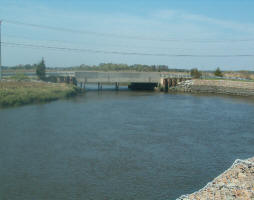Initiatives & Projects
 Membrane bioreactor technology (MBR) with an EU perspective for advanced municipal
Membrane bioreactor technology (MBR) with an EU perspective for advanced municipal
- The World is running out of clean, safe, fresh water. By 2025 one third of humanity (ca. 3 billion people) will face severe water scarcity. This has been described as the “single greatest threat to health, the environment and global food security”. Water is essential and preservation of its safety in quantity and in quality is critical to the sustainable development of any society.
| Project number | SUSTDEV-2004-3.II.3.2.2 | ||
|---|---|---|---|
| Subject(s) | DRINKING WATER AND SANITATION : COMMON PROCESSES OF PURIFICATION AND TREATMENT , ENERGY , FINANCE-ECONOMY , POLICY-WATER POLICY AND WATER MANAGEMENT | ||
| Acronym | EUROMBRA | ||
| Geographical coverage | Norway, United Kingdom, Germany, France, Portugal, Switzerland, Netherlands, Austria, Italy | ||
| Budget (in €) | 4621145 | ||
| Programme | INCO MED (FP6) | ||
| Objectives | - The goal of this project is to make a contribution to meet this
challenge.The protection of water in the European Union has been encouraged
through the Water Framework Directive (WFD). The intention of WFD is to
protect water resources (quality and quantity) through an integrated water
resource management policy. Wastewater treatment is an important aspect of
water management. Efficient, cost effective treatment processes are needed
for transforming wastewater into water free from contamination which can be
returned to the hydrological cycle without detrimental effects. The
development and application of MBR for full scale municipal wastewater
treatment is the most important recent technical advance in terms of
biological wastewater treatment. It represents a decisive step further
concerning effluent quality by delivering a hygienically pure effluent and
by exhibiting a very high operational reliability. - The overall objective of EUROMBRA is to develop a cost-effective, sustainable solution for new, efficient and advanced municipal wastewater treatment based on MBR technology. This will be achieved through a multi-faceted, concerted and cohesive research programme explicitly linking key limiting phenomena (fouling, clogging) observed and quantified on the micro-, meso-. and macro-scale. Key to the success of the programme is the harnessing specialist knowledge, conducting of dedicated yet interlinked experiments and incorporating key aspects of both system design and operational facets, the latter encompassing hydrodynamics and mass transfer, foulant speciation and dynamic impacts. |
||
| Period | [01/01/2006 - 01/01/2009] | ||
 you are not logged in
you are not logged in





